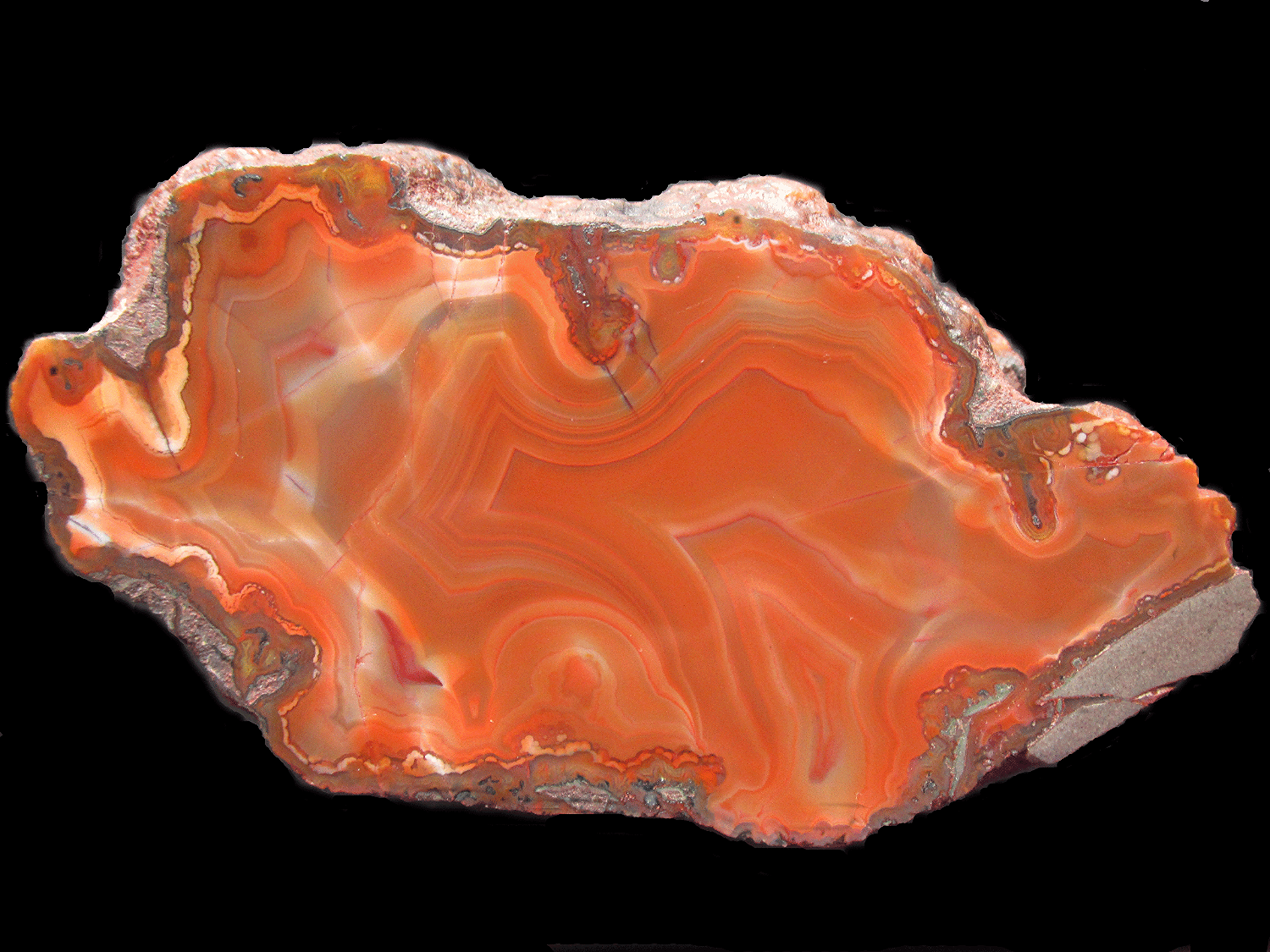
90mm x 47mm
This agate remains the largest I have found in the Usan area. Even if you are lucky enough to find another of this size that is not mainly composed of quartz it will generally be grey-blue in colour. Large coloured agates from the area are scarce. I have not seen another of this type from the beaches. Many larger nodules discovered here exhibit bland colouration and broad bands, without particular distinction. This agate is complex.
It was found in March 2014. I had been prospecting for unexplored locations within the areas I was already frequenting. From my approach one evening at low tide, I was descending the gentle incline at the perimeter of a field and looking beyond the beach and rocks below where I searched regularly. I could see an area of shingle beyond. It turned-out to be a gully between two raised rocky outcrops, and during that evening and the following one it proved to be sparsely productive. The stone above was discovered unexpectedly in a flat area where it appeared to have only recently been eroded from the rocks out to sea, and subsequently washed-up.
From the outside the nodule exhibited quite bright and yellow-tinged colouration, and so I wrongly assumed it to be mainly quartz, surrounded by a layer of agate. Of course, I was very surprised when it was cut, revealing no quartz whatsoever. It was fractured however, so I treated the stone with wax which worked well. Although I rarely treat many of my agates using the same procedure now, if the pattern within a stone is highly compromised by fractures, it can be worth it.
Looking closely, you will see that the nodule's outermost layer consists of a golden yellow layer, characteristic to certain areas of Usan, occasionally drooping to form several large and very detailed pendants within the upper and more rarely in the lower areas of the face. Of course, from observing large agates still within the matrix in the Usan area, it is duly noted that generally, stones of this size break-up long before being released by tidal erosion. Perhaps this is an obvious statement, but Usan tides are particularly rough. I have seen geodes in areas only exposed during Spring Tides measuring 30-40cm, that are slowly emerging in pieces. The andesitic rock is practically impenetrable in such places. In some areas of Usan the lavas have become more weathered and soft, but then again so have the agates contained therein!
Somehow this particular agate survived.



